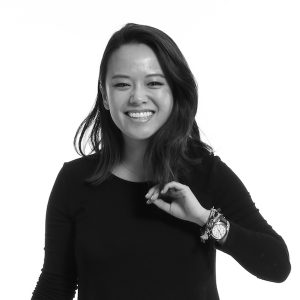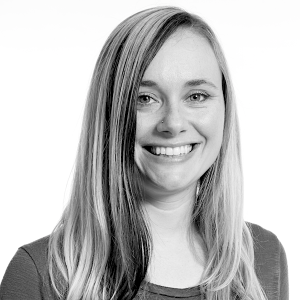
Inclusivity Is A Design Opportunity
From the way cities are planned to how products and services made, large groups of people tend to be left out of consideration. At Designing for Inclusivity, a recent discussion hosted at frog’s San Francisco studio in December, panelists and attendees discussed ways the design community can make a difference. Helping inclusivity become more mainstream in the designers’ collective conscience is also one of our Tech Trends for 2018.
We design for humans, but we are mere humans ourselves, guilty of bringing our own biases and assumptions into our work. Because we bring new tools and services into the world, we tend to focus on the needs of our primary users. But it’s important to expand our definition of inclusion for users of all abilities. It’s our responsibility as designers to be considerate in this process to avoid creating bigger barriers of exclusion.
Throughout the conversation, a more inclusive world was seen as one where individuals, businesses and organizations understand that living in the world with a ‘disability’ is not purely a medical diagnosis, but a recognition of poorly designed systems failing to adequately support more people.
“I see this as a chance to recruit an army of designers and design thinkers who are thinking about how to design for more people,” said Dr. Victor Pineda, a panelist at the event. As a social development scholar and disability rights advocate, Pineda stresses the positive ripple effect caused by inclusive thinking in product design. “I’m thinking not only about what a product can do, but also how that product transforms the way society understands what’s possible.”

The Language Of Inclusivity
How we talk about inclusivity was a major focus of the discussion. As panelists shared their own vocabulary and definitions, it became clear how crucial our environments and interactions are in shaping our lives.
“What is ‘disability?’ To me, it’s defined by two experiences. One is feeling excluded, like you don’t belong. The second is the loss of independence,” said panelist Tiffany Yu. As founder of Diversability, she leads efforts to “rebrand disability through the power of community.”
Culturally, designing for inclusivity is in line with a renewed focus on social justice in today’s landscape. Businesses have a critical role in mainstreaming inclusivity by putting more products in more hands through human-centered design that considers people of all abilities.

Good design is user-centered, but excellent design is able to expand that center. This requires thinking about the various barriers placed on those living with disabilities, from massive economic restrictions to difficulty accessing certain experiences. Look around you as you go through your day. How many stairs do you climb? How many wayfinding tools are audible? Did you use both of your hands to brush your teeth? By becoming aware of the current state, it will sharpen your eye for opportunities.
Designers can enhance their work by adopting a more inclusive mindset, but this still falls short of full community representation in the design process. According to panelist Zahna Simon, progress includes thinking of who’s being paid to do the work in the first place. “Hire people from those communities. They’re looking for work….and they’re getting closed doors because they don’t have the access. Be an ally.” If you’re not in a position to hire, think also about how a strategic partnership within the community could bring better solutions and avoid designing in a bubble.
To make things better, we need to make better things. Considerauditing your website or any other applications or products you own for accessibility. There are a lot of big changes that are necessary, but start small today. Put up clear and accessible wayfinding tools, ensure your visual design works for people with dyslexia, list accessibility details about your office on the website, etc. It starts with some action and it can grow from there.
The Opportunity For Inclusivity
Rather than forcing people to engage with broken systems, there is tremendous opportunity for organizations to gauge the success of an offering by its reach. For many businesses looking for growth, it only makes sense to widen your user base through more inclusive offerings. By focusing on the quality of the experience, it is possible to deepen a customer’s relationship with a brand–and more customers at that.
At frog, our mission is to advance the human experience, which we believe requires a broad understanding of that experience. The goal of Designing for Inclusivity was to keep the conversation front of mind for the design community.
We design for humans, and that means a lot of different kinds of humans. A part of our process is to talk to people, to learn from them. Ultimately, we have the honor to bring products and services into the world and we don’t take that honor lightly.

Designing For Inclusivity Resources
Here are some great starting places for getting more information on integrating inclusivity into your design processes:
- Dos and Don’ts on Designing for Accessibility: Resources and Downloads
- Equal Entry: Raising Awareness and Training for Accessibility
- A11yBay: A Bay Area Meetup for Accessibility and Inclusive Design
- Disability Visibility Project: An Online Community for Sharing Disability Media and Culture
- YO! Disabled and Proud: Connecting Youth and Disabilities
- Diversability: Rebranding Disability through Social Enterprise
- World Enabled: Promoting the Rights and Dignities of Persons with Disabilities
- Dyno Mapper: 70 Web Accessibility Resources for Designing for Accessibility
- W3C: Web Accessibility Initiative: Designing for Inclusion
- Web Aim: Web Accessibility for Designers
- Deaf Friendly: Crowd-Sourced Information About Deaf-Friendly Businesses

As frog’s Knowledge Manager and as part of the global marketing team, Justine works across frog’s eight studios. She’s passionate about shining light on stories about novel ideas and fascinating people from marginalized communities. In 2016, she co-created Make America Dinner Again, a dinner series that brings people with different political viewpoints together with the aim to build understanding.

Melanie is an Associate Creative Director, Design Research lead and staple in frog’s healthcare work. Her specialties include interaction design, design research, user experience and product development. Whether it’s prototyping products to help people sleep in Chicago or interviewing pregnant women in rural Kenya, her passion for people uncovers true user value and real business opportunity.
We respect your privacy
We use Cookies to improve your experience on our website. They help us to improve site performance, present you relevant advertising and enable you to share content in social media. You may accept all Cookies, or choose to manage them individually. You can change your settings at any time by clicking Cookie Settings available in the footer of every page. For more information related to the Cookies, please visit our Cookie Policy.